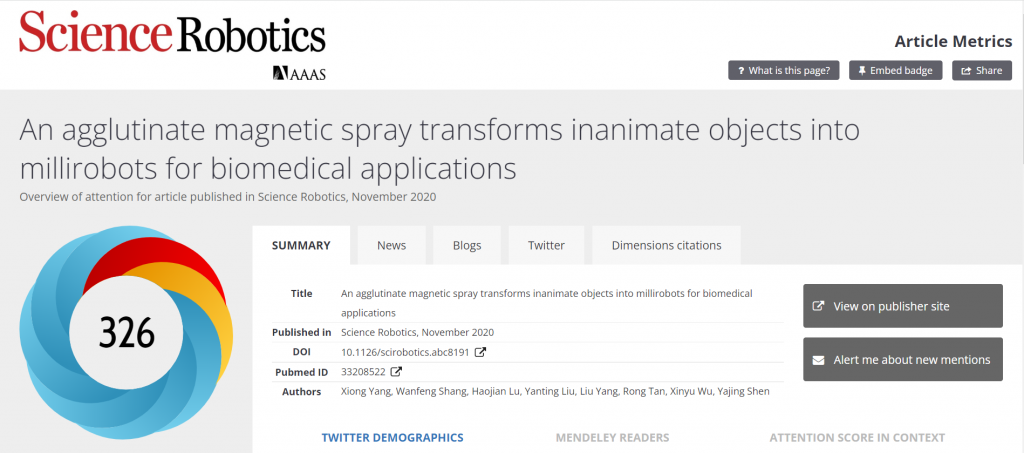Abstract
Millirobots that can adapt to unstructured environments, operate in confined spaces, and interact with a diverse range of objects would be desirable for exploration and biomedical applications. The continued development of millirobots, however, requires simple and scalable fabrication techniques. Here, we propose a minimalist approach to construct millirobots by coating inanimate objects with a composited agglutinate magnetic spray. Our approach enables a variety of one-dimensional (1D), 2D, or 3D objects to be covered with a thin magnetically drivable film (~100 to 250 micrometers in thickness). The film is thin enough to preserve the original size, morphology, and structure of the objects while providing actuation of up to hundreds of times its own weight. Under the actuation of a magnetic field, our millirobots are able to demonstrate a range of locomotive abilities: crawling, walking, and rolling. Moreover, we can reprogram and disintegrate the magnetic film on our millirobots on demand. We leverage these abilities to demonstrate biomedical applications, including catheter navigation and drug delivery. [Science Robotics, 5.48 (2020): eabc8191]
Article Metrics

